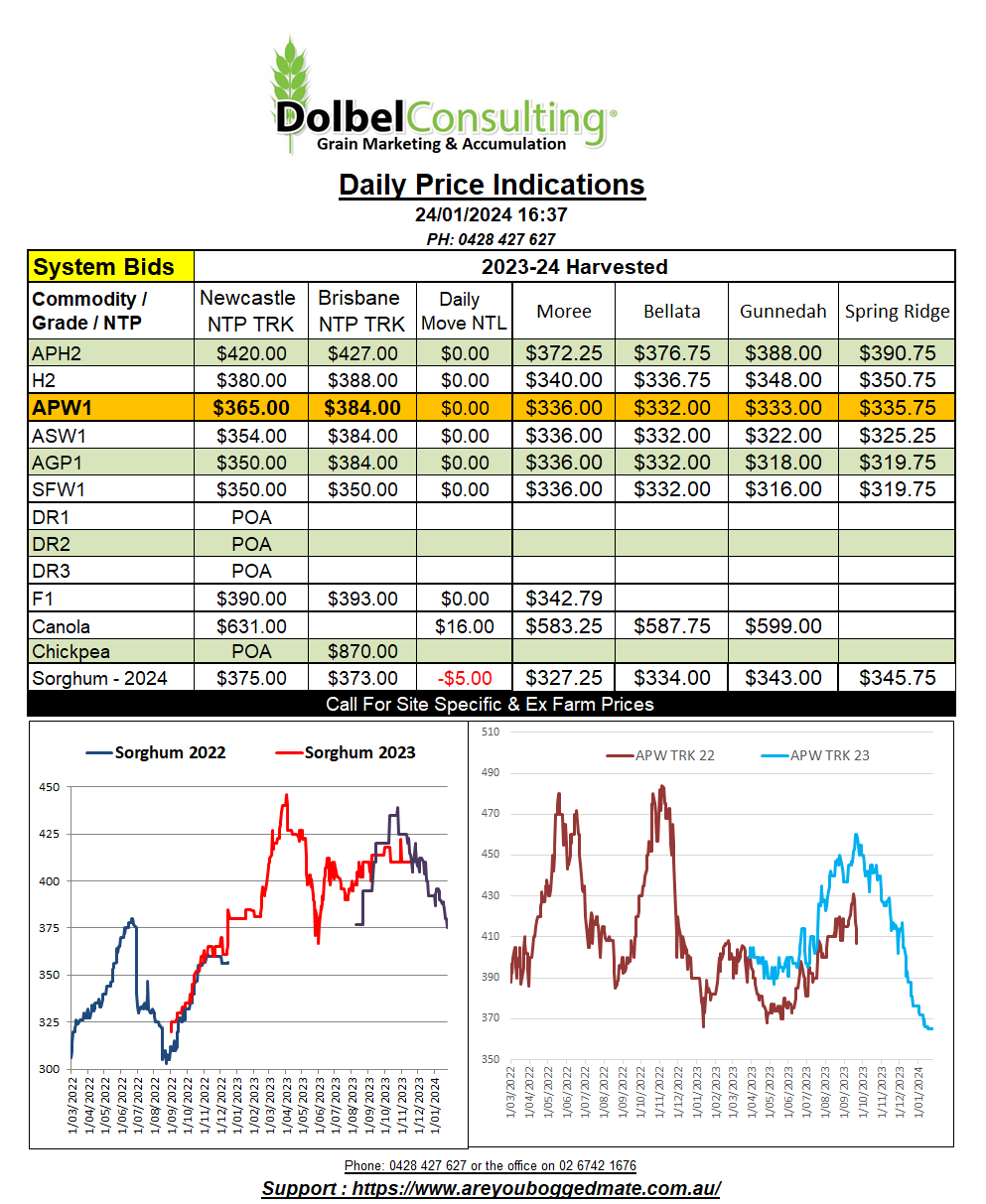24/1/24 Prices

Not exactly a volatile Chicago market for corn and soft red winter wheat, both making relatively small moves either side of unchanged. Hard red winter wheat at Chicago and out of the Pacific Northwest kicked the trend in SRWW and corn, and managed to push higher.
Soybean at Chicago again defied Brazilian pressure and pushed higher, dragging both ICE canola and Paris rapeseed futures higher by the close. Is this rally in soybeans a bear trap or simply a dead cat bounce, time will tell.
In the meantime there’s reports from the ground in Mato Grosso confirming there are still plenty of good soybean crops there to harvest. World Ag Weather confirms good 30 day precipitation across much of the Brazilian soybean area, and the forecast of more to come over the next 7 days, potentially too much for some locations to the SE. The earliest soybean fields in Brazil are close to harvest but the bulk of the crop is expected to come in during March / April / May. Harvest further south in Argentina is roughly a month later. Conditions in Argentina over the next week are expected to be a little drier. The summer for Argentina has been good, most of the cropping country seeing 100% to 125% of average rainfall over the last 90 days.
After a very cold snap, the next few days across Europe should begin to warm a little. Potentially even becoming a little warmer than average in parts of western France and southern Germany. Prior to the cold blast temperatures in the south of France were warm, around 10C. The cold snap saw these regions fall to -1C to -6C. These temperatures are not dire but crop condition will need to be monitored in the spring. Further north in the major winter wheat regions of France temperatures were generally dipping down to frost point prior to the change. The cold snap saw mornings in the north fall as low as -10C in some locations. Without snow cover this could have resulted in some issues for winter sown cereals.
